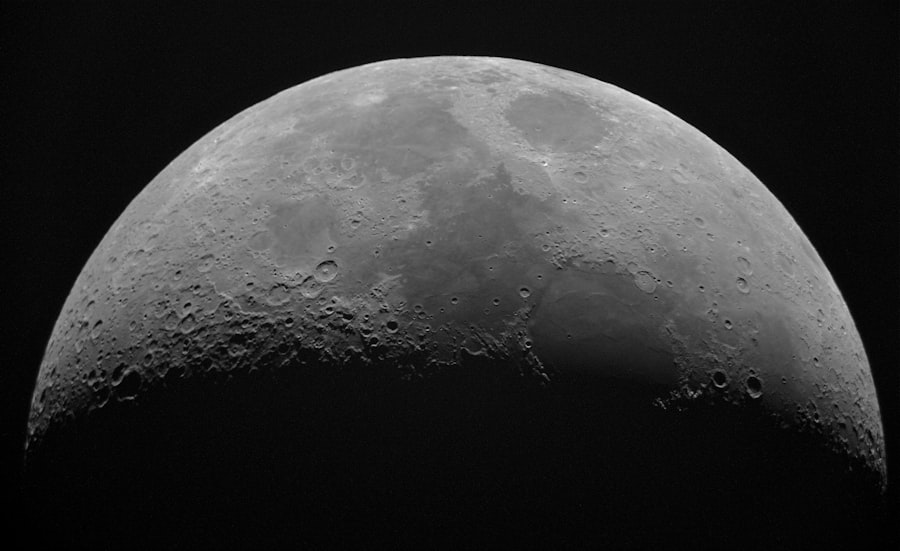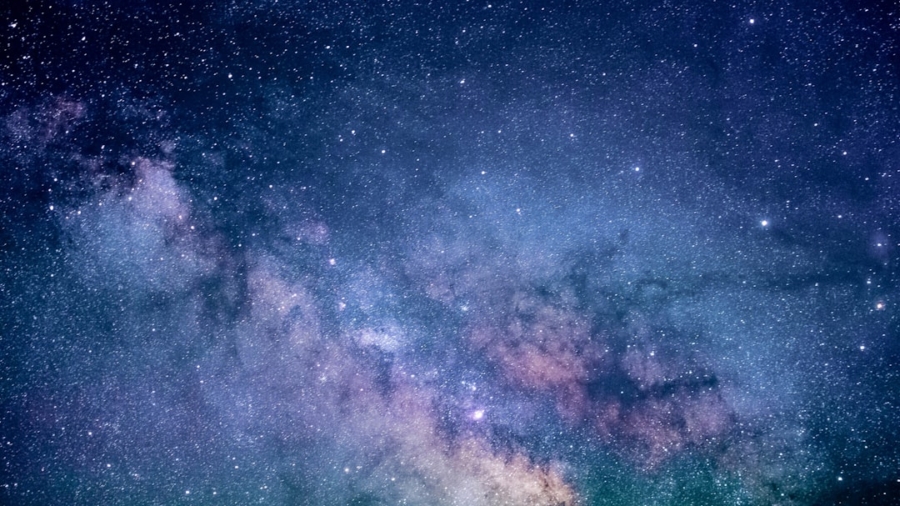Deep space telescopes represent a monumental leap in humanity’s quest to understand the cosmos. These sophisticated instruments are designed to observe celestial objects that are billions of light-years away, providing invaluable insights into the formation and evolution of galaxies, stars, and planetary systems. Unlike ground-based telescopes, which are limited by atmospheric interference, deep space telescopes operate above the Earth’s atmosphere, allowing for clearer and more detailed observations.
Notable examples include the Hubble Space Telescope, the James Webb Space Telescope (JWST), and the upcoming Roman Space Telescope. Each of these instruments is equipped with advanced optics and sensors that capture a wide range of electromagnetic radiation, from ultraviolet to infrared. The data collected by these telescopes is not merely a collection of images; it is a treasure trove of information that can reveal the underlying physics of the universe.
For instance, the Hubble Space Telescope has provided critical evidence for the existence of dark energy and has helped refine our understanding of the rate of expansion of the universe. Similarly, the JWST aims to delve deeper into the infrared spectrum, allowing astronomers to study the formation of stars and galaxies in unprecedented detail. As these telescopes continue to push the boundaries of our observational capabilities, they generate vast amounts of data that require sophisticated analysis techniques to extract meaningful insights.
Key Takeaways
- Deep space telescopes are essential for studying distant celestial objects and phenomena.
- AI is crucial for analyzing the massive amounts of data collected by deep space telescopes.
- AI processes and analyzes data from deep space telescopes by identifying patterns and anomalies.
- The use of AI in analyzing deep space telescope data leads to increased efficiency and accuracy.
- Challenges in using AI for analyzing deep space telescope data include data quality and interpretability.
The Need for AI in Analyzing Data from Deep Space Telescopes
The Challenges of Big Data in Astronomy
This deluge of information poses significant challenges for astronomers and astrophysicists who must sift through it to identify patterns, anomalies, and significant findings. Traditional data analysis methods, which often rely on manual inspection and basic statistical techniques, are insufficient for handling such large datasets efficiently.
The Need for Advanced Analytical Tools
As a result, there is an urgent need for advanced analytical tools that can automate and enhance the data processing workflow. Artificial intelligence (AI) has emerged as a powerful solution to this problem.
AI-Driven Insights in Astronomy
By leveraging machine learning algorithms and neural networks, AI can analyze complex datasets at speeds and accuracies far beyond human capabilities.
The integration of AI into the data analysis pipeline not only accelerates the discovery process but also enables researchers to focus on interpreting results rather than getting bogged down in data management.
How AI is Used to Process and Analyze Data from Deep Space Telescopes

AI’s application in analyzing data from deep space telescopes encompasses several methodologies, each tailored to address specific challenges inherent in astronomical research. One prominent approach is supervised learning, where algorithms are trained on labeled datasets to recognize patterns and classify objects. For instance, researchers can use labeled images of galaxies to train a model that can subsequently identify and categorize new galaxy images captured by telescopes.
This method has proven effective in classifying different types of galaxies based on their morphology, such as spiral or elliptical shapes. Another significant application of AI is in anomaly detection, where machine learning models are trained to identify outliers or unexpected phenomena in astronomical data. This technique has been particularly useful in discovering transient events like supernovae or gravitational wave signals.
By training models on historical data, AI can flag unusual signals that warrant further investigation. Additionally, unsupervised learning techniques can cluster similar data points without prior labeling, revealing hidden structures within large datasets. This capability is crucial for exploring vast regions of parameter space in astrophysics, where new discoveries often lie in unexpected corners.
The Advantages of Using AI in Analyzing Deep Space Telescope Data
The advantages of employing AI in the analysis of deep space telescope data are manifold. First and foremost, AI significantly enhances efficiency. Traditional methods of data analysis can be time-consuming and labor-intensive, often requiring teams of researchers to manually inspect images and spectra for relevant features.
In contrast, AI algorithms can process vast datasets in a fraction of the time, allowing scientists to accelerate their research timelines and focus on higher-level questions about the universe. Moreover, AI’s ability to learn from data means that it can continuously improve its performance over time. As more data becomes available from ongoing observations, machine learning models can be retrained to refine their accuracy and adapt to new discoveries.
This adaptability is particularly important in a field as dynamic as astronomy, where new phenomena are constantly being observed. Furthermore, AI can uncover patterns that may not be immediately apparent to human analysts due to cognitive biases or limitations in observational techniques. By revealing these hidden relationships within the data, AI can lead to groundbreaking discoveries that reshape our understanding of cosmic processes.
Challenges and Limitations of Using AI in Analyzing Deep Space Telescope Data
Despite its numerous advantages, the integration of AI into astronomical data analysis is not without challenges. One significant concern is the interpretability of AI models. Many machine learning algorithms operate as “black boxes,” meaning that while they can make accurate predictions or classifications, understanding how they arrived at those conclusions can be difficult.
This lack of transparency poses challenges for scientists who need to validate findings and ensure that results are scientifically sound. Additionally, there is a risk of overfitting when training models on limited datasets. If an AI model learns too much from a specific dataset without generalizing well to new data, it may produce misleading results when applied to real-world observations.
This issue underscores the importance of using diverse training datasets that encompass a wide range of astronomical phenomena. Furthermore, ethical considerations arise when deploying AI in scientific research; ensuring that algorithms do not inadvertently perpetuate biases present in historical datasets is crucial for maintaining scientific integrity.
Examples of AI’s Impact on Analyzing Data from Deep Space Telescopes

Several notable examples illustrate the transformative impact of AI on analyzing data from deep space telescopes. One prominent case involves the use of machine learning algorithms to classify exoplanets based on transit photometry data collected by missions like Kepler and TESS (Transiting Exoplanet Survey Satellite). Researchers have developed models that can accurately predict whether a detected transit signal corresponds to a planet or a false positive caused by stellar activity or instrumental noise.
This capability has led to a more efficient identification of potentially habitable exoplanets. Another compelling example comes from the application of AI in analyzing gravitational wave signals detected by observatories like LIGO (Laser Interferometer Gravitational-Wave Observatory). Machine learning techniques have been employed to sift through vast amounts of noise in search of faint gravitational wave signals produced by colliding black holes or neutron stars.
By training models on simulated waveforms, researchers have improved their ability to detect real events amidst background noise, leading to groundbreaking discoveries about the nature of these cosmic phenomena.
The Future of AI in Analyzing Data from Deep Space Telescopes
Looking ahead, the future of AI in analyzing data from deep space telescopes appears promising and full of potential. As new telescopes come online and existing ones continue to gather data at unprecedented rates, the demand for advanced analytical tools will only increase. Future developments may include more sophisticated algorithms capable of real-time analysis, allowing astronomers to make immediate decisions about follow-up observations based on initial findings.
For instance, advancements in natural language processing could enable researchers to query large datasets using plain language, making it easier for scientists from various disciplines to engage with astronomical data without needing extensive technical training. As AI continues to evolve, its integration into astronomical research will undoubtedly lead to new discoveries and deepen our understanding of the universe.
The Importance of AI in Advancing Our Understanding of the Universe
The integration of artificial intelligence into the analysis of deep space telescope data marks a significant milestone in our quest to comprehend the cosmos. By harnessing the power of machine learning and advanced algorithms, researchers can navigate the complexities of vast datasets with unprecedented efficiency and accuracy. While challenges remain regarding interpretability and potential biases within AI models, ongoing advancements promise to enhance our analytical capabilities further.
As we stand on the brink of new discoveries facilitated by AI-driven analysis, it is clear that this technology will play an essential role in shaping our understanding of fundamental questions about the universe’s origins, structure, and fate. The collaboration between astronomers and AI experts will continue to yield innovative solutions that push the boundaries of what we know about our place in the cosmos.
An interesting article related to the use of AI in analyzing data from deep space telescopes is “The Best Software for Furniture Design” from enicomp.com. This article discusses how technology is revolutionizing the furniture design industry, similar to how AI is transforming the way we analyze data from telescopes. To read more about the latest software tools for furniture design, check out this article.
FAQs
What is the role of AI in analyzing data from deep space telescopes?
AI plays a crucial role in analyzing data from deep space telescopes by helping to process and interpret the massive amounts of data collected. It can identify patterns, anomalies, and potential areas of interest within the data that may not be immediately apparent to human researchers.
How does AI assist in processing data from deep space telescopes?
AI algorithms can efficiently process and analyze large volumes of data from deep space telescopes, helping to identify celestial objects, classify them, and even predict their behavior. This can significantly speed up the process of scientific discovery and exploration.
What are the benefits of using AI in analyzing data from deep space telescopes?
Using AI in analyzing data from deep space telescopes can lead to more efficient and accurate data analysis, enabling researchers to make new discoveries and gain a deeper understanding of the universe. It can also help in identifying rare or unusual phenomena that may have been overlooked in traditional data analysis methods.
Can AI help in identifying new celestial objects or phenomena?
Yes, AI can assist in identifying new celestial objects or phenomena by analyzing data from deep space telescopes and recognizing patterns or anomalies that may indicate the presence of something previously unknown. This can lead to the discovery of new stars, galaxies, or other celestial bodies.
How does AI contribute to the field of astronomy and astrophysics?
AI contributes to the field of astronomy and astrophysics by enabling researchers to process and analyze vast amounts of data from deep space telescopes more efficiently and effectively. This can lead to new discoveries, a better understanding of the universe, and the ability to answer fundamental questions about the cosmos.

